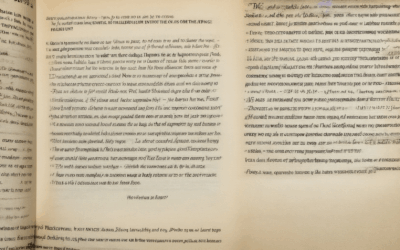Writing with authenticity and depth is a cornerstone of great storytelling, allowing writers to connect with readers on a profound level. Whether crafting a heartfelt memoir, a gripping novel, or a persuasive essay, the ability to infuse works with genuine emotion and meaningful insight is what separates exceptional writing from the ordinary. This comprehensive guide delves into the essence of authenticity and depth in writing, exploring how these elements can transform your craft and resonate with audiences long after the final page. From understanding how to demonstrate depth through vivid descriptions to unlocking the power of authenticity, this exploration will equip you with practical strategies to elevate your writing to new heights. Let’s embark on a journey to uncover the secrets of creating writing that feels true to life and deeply meaningful.

How to Show Depth in Writing
Depth in writing is achieved through careful attention to detail and nuanced character development. Here are some strategies to enhance your writing with greater depth:
- Character Development: Create multi-dimensional characters by revealing their actions, thoughts, and feelings. Show their reactions to situations and how they interact with their environment.
- Sensory Details: Incorporate sensory descriptions such as sights, sounds, smells, and textures to immerse the reader in the moment. For example, describe the scent of a candle or the sound of rain.
- Dialect and Dialogue: Use unique speech patterns and dialects to differentiate characters. Realistic conversations can reveal a character’s background and personality.
- Setting Description: Richly describe environments to evoke mood and provide insight into characters. A dimly lit room may suggest melancholy, while a sunny beach conveys joy.
- Internal Monologue: Allow readers access to characters’ thoughts and motivations. This adds depth by revealing their fears, hopes, and decision-making processes.
- Conflict and Growth: Depict characters facing challenges and evolving over time. Show subtle changes in behavior or decisions to demonstrate growth.
By integrating these elements, writers can create characters and narratives that resonate deeply with readers, offering complexity and emotional engagement.
What Are the 4 Types of Writing Styles?
The four primary types of writing styles are persuasive, narrative, expository, and descriptive. Each style serves a unique purpose and is used in various contexts to communicate effectively.
- Persuasive Writing: This style aims to convince or persuade the reader to adopt a certain point of view, agree with an argument, or take a specific action. Examples include advertisements, editorials, and speeches. Tips: Use logical arguments and emotional appeals strategically.
- Narrative Writing: This style tells a story or conveys a sequence of events. It is often used in novels, short stories, and autobiographies. Examples include fictional tales and personal memoirs. Tips: Develop characters, plot, and setting to engage the reader.
- Expository Writing: This style explains or informs the reader about a topic. It is often used in educational texts, manuals, and instructional guides. Examples include technical manuals and explanatory articles. Tips: Organize information logically and provide evidence to support claims.
- Descriptive Writing: This style focuses on vividly describing objects, scenes, or experiences. It is often used in poetry, travel writing, and creative fiction. Examples include landscape descriptions and character profiles. Tips: Use sensory details to paint a clear picture in the reader’s mind.
Understanding these styles can help writers choose the most effective approach for their audience and purpose. By balancing clarity and engagement, writers can craft messages that resonate deeply with their readers.

Hemingway’s Insights on Writing
E Ernest Hemingway, a renowned author and literary icon, shared profound insights about the craft of writing. His quotes and reflections offer valuable wisdom for aspiring writers:
- “We are all apprentices in a craft where no one ever becomes a master.” Hemingway believed that writing was a continuous learning process, emphasizing the journey rather than the destination.
- “I learned never to empty the well of my writing, but always to stop when there was still something there in the deep part of the well, and let it refill at night from the springs that fed it.” This quote underscores the importance of patience and allowing inspiration to flow naturally, rather than forcing creativity.
- “There is no friend as loyal as a book.” Hemingway highlighted the value of literature and the enduring connection between a writer and their work.

Understanding Writing Depth
Writing depth refers to the richness and complexity of a story, allowing it to resonate on multiple levels and leave a lasting impression on the reader. Here’s a breakdown of key elements contributing to writing depth:
- Character Development :
-
Create multi-dimensional characters with distinct backgrounds, motivations, and emotions. This adds depth, making characters relatable and engaging.
-
Plot Complexity :
-
Develop a plot that explores themes and symbolism, offering layers of meaning. This can include a non-linear narrative or a gradual unfolding of events that invite analysis.
-
Setting and Atmosphere :
-
Use setting to enhance the story’s mood and reflect the characters’ lives. Whether urban or rural, the environment mirrors the protagonist’s internal state, enriching the narrative.
-
Pacing :
-
Balance the story’s tempo, allowing sufficient time for themes and character growth. Slow moments enable reflection, while quick ones build suspense.
-
Imagery and Symbolism :
-
Employ vivid descriptions and recurring symbols to invite deeper exploration of the story’s meaning, adding visual and metaphorical depth.
-
Show, Don’t Tell :
-
Reveal character development and plot through actions and dialogue, allowing the story to unfold authentically and impactfully.
-
Emotional Connection :
- Aim for an emotional resonance that connects readers deeply, ensuring the story lingers in their minds and evokes lasting feelings.
By integrating these elements, writers can craft narratives that are profound and thought-provoking, enhancing the reader’s engagement and retention.
In-Depth Meaning in Writing
“In-depth” refers to a writing style characterized by thorough exploration and detailed examination of a subject. It involves diving below the surface, providing analysis, personal insights, and comprehensive coverage to offer a full understanding beyond mere surface-level descriptions.
This approach often involves:
- Detailed Analysis : Going beyond simple summaries to explore concepts, critique, or discuss multiple perspectives.
- Personal Reflection : Incorporating author’s insights or feelings, adding depth through subjective viewpoints.
- Comprehensive Coverage : Offering extensive information, including background context and diverse viewpoints, as seen in detailed historical analyses or complex character studies.
Examples include:- A book review delving into a protagonist’s motivations, exploring their psychological makeup and narrative significance.- A historical article that situates events within broader societal contexts, providing richer understanding than mere timelines.
In journalism, in-depth reporting may involve interviews, multiple sources, and background information to offer a complete picture. While long-form articles and feature pieces are common platforms for in-depth exploration, shorter pieces can achieve this by focusing sharply on key elements.
Ultimately, in-depth writing aims to engage readers emotionally and intellectually, fostering a deeper connection and understanding through detailed, nuanced storytelling and analysis.

Example of Depth
The term “depth” refers to the measurement of how far something extends vertically or how much of something exists within. Here are some examples:
- The swimming pool has a depth of six feet.
- The well has an unknown depth.
- People can be deep as well, as you know by looking at some people that they have depth.
- Depth goes with other measure words that end in “th,” such as thickness or profundity.
- Length is how long something is, whereas depth is how thick or deep it is. For instance, a sandwich may have a certain length but limited depth due to its thinness.
Understanding depth helps in various contexts, from engineering to everyday language usage. It provides a clearer understanding of measurements and descriptions in both physical and abstract terms.




0 Comments